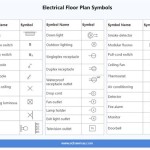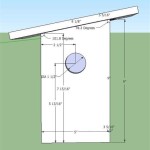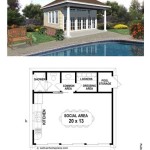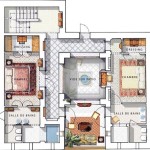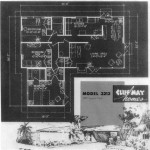Residential Floor Plan Sample: A Guide to Understanding and Utilizing Them
Residential floor plans are scaled diagrams that depict the layout of a house or apartment. They provide a bird's-eye view of the arrangement of rooms, walls, doors, windows, and other architectural features. These plans serve as essential tools for a variety of stakeholders, including prospective homeowners, architects, builders, interior designers, and real estate agents.
Understanding the components of a residential floor plan is crucial for interpreting the design and functionality of a home. Typically, floor plans include exterior and interior walls, doors and windows, including their swing directions, staircases, and fixed installations such as fireplaces, bathtubs, and kitchen counters. They may also indicate the location of electrical outlets, plumbing fixtures, and appliances. Dimensions are usually marked to provide accurate measurements of rooms and overall space.
Residential floor plans are categorized into various types based on the style and size of the home. Common types include single-story floor plans, two-story floor plans, split-level floor plans, and open floor plans. Single-story plans are popular for their accessibility and ease of maintenance. Two-story plans offer more living space within a smaller footprint. Split-level plans create distinct living zones on different levels, while open floor plans prioritize spaciousness and flow by minimizing interior walls.
Sample floor plans offer prospective homeowners a valuable resource during their home search. They allow individuals to visualize the layout and flow of a home, assess its functionality, and determine if it meets their needs and lifestyle. By studying sample floor plans, prospective homeowners can develop a realistic understanding of the space and its potential.
Architects and builders utilize floor plans as blueprints for constructing homes. These plans guide the construction process, ensuring that all elements are built according to the design specifications. Accurate and detailed floor plans are critical for avoiding costly errors and ensuring the structural integrity of the building.
Interior designers rely on floor plans to develop their design concepts. The plan provides a framework for arranging furniture, selecting color schemes, and planning lighting. By understanding the spatial relationships within the home, interior designers can create harmonious and functional living spaces.
Real estate agents use floor plans as marketing tools to showcase properties to potential buyers. Floor plans allow buyers to visualize the property and its features more effectively than photographs alone. They help buyers understand the size and layout of the home and imagine themselves living in the space.
Several resources are available for finding sample residential floor plans. Online platforms dedicated to home design and architecture offer extensive collections of floor plans searchable by size, style, and features. Architectural magazines and books also provide a wealth of inspiration and examples. Real estate websites often include floor plans for listed properties.
When analyzing a residential floor plan sample, consider several key factors. Assess the overall flow and functionality of the space. Evaluate the size and placement of rooms in relation to each other. Determine if the layout suits your lifestyle and needs. Consider the placement of windows and doors for natural light and ventilation. Think about how the space can be adapted to future needs and changing lifestyles.
While sample floor plans offer valuable insights, it’s essential to remember that they are representations. Actual dimensions and features may vary. It’s always advisable to visit the property in person and verify the accuracy of the floor plan before making any decisions.
Customizing a floor plan allows homeowners to create a space that perfectly suits their needs and preferences. Working with an architect or designer allows for the modification of existing floor plans or the creation of entirely new designs. Customizing a floor plan offers the opportunity to optimize space utilization, incorporate specific features, and create a truly personalized living environment.
The advancement of technology has significantly influenced the creation and utilization of residential floor plans. Computer-aided design (CAD) software allows architects and designers to create detailed and accurate 2D and 3D floor plans. Virtual reality and augmented reality technologies enable prospective homeowners to experience immersive walkthroughs of potential homes, providing a realistic sense of space and layout.
The use of sustainable design principles in residential floor plans is becoming increasingly important. These principles focus on creating energy-efficient homes that minimize environmental impact. Sustainable design incorporates elements such as passive solar heating and cooling, natural ventilation, and the use of eco-friendly building materials. Floor plans that prioritize sustainability contribute to reduced energy consumption and a healthier living environment.
Universal design principles are also gaining prominence in residential floor plans. Universal design aims to create spaces that are accessible and usable by people of all ages and abilities. This includes features such as wider doorways, zero-step entries, and adaptable bathrooms. Floor plans incorporating universal design principles promote inclusivity and ensure comfortable living for everyone.

12 Examples Of Floor Plans With Dimensions

Sample Floor Plan Image With The Specification Of Diffe Room Sizes Scientific Diagram

Free Floorplan Template Inspirational Home Plans Sample House Floor Simple Plan Layout

Example Of An Apartment Floor Plan On Which The Residents Have Drawn Scientific Diagram

Floor Plans Types Symbols Examples

House Floor Plan Template

Home Floor Plans House Plan Drawings

Ready To Use Sample Floor Plan Drawings Templates Easy Blue Print Floorplan Ezblueprint Com

Free Editable Apartment Floor Plans Edrawmax

Simple House Design Floor Plan Template

